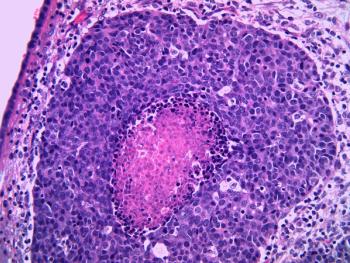
Robotic Device May Improve Prostate Cancer Detection
Robotic trainer rectum helps teach providers to better detect prostate cancer.
A robotic trainer rectum presented at the recent Eurohaptics conference may help health care providers better detect prostate cancer.
Rectal examinations are often the first test performed on a patient and are necessary for the diagnosis of conditions, such as prostate cancer. But, it can be difficult to learn exactly what a potentially cancerous prostate feels like.
“Internal examinations are really challenging to learn, and to teach,” said researcher Fernando Bello. “Because the examinations occur in the body, the trainer cannot see what the trainee is doing, and vice versa. In addition to this, medics rarely get the chance to practice the examination, as few patients would volunteer as practice subjects. In fact, there is only 1 person registered in the country as a test subject, called a Rectal Teaching Assistant (RTA) in the UK.
“But the results of these examinations can have major implications for patients. They are very important for early diagnosis of various conditions, such as prostate cancer.”
Although there are plastic models available to help train medical staff, they don’t feel like living tissue and flesh. To address this issue, researchers created a device that contains small robotic arms that apply pressure to the silicone rectum.
The new technology accurately recreates the shape and feel of a rectum to help train nurses and physicians in performing rectal examinations, and providing feedback on their techniques.
“We scanned a number of volunteers with an MRI scan and used this to perfect the shape and geometry of the anatomy,” said lead developer Alejandro Granados.
The computer screen behind the device displays a 3D model of the rectum and prostate. Using 3D glasses, physicians can see the anatomy while the examination is performed.
The device can even be programmed for various scenarios to allow for the anatomy to be changed every time.
“We have already asked a number of doctors and nurses — including prostate specialists and cancer surgeons – to trial the technology,” Granados said. “They commented on the advantage of being able to alter the anatomy. The size and shape of the rectum and prostate can vary greatly from person to person, and this technology enables medics to practice their skills in many different virtual patients. They also observed that because these examinations are performed solely by feel, experiencing a realistic sensation is crucial.”
Currently, researchers are collecting data from real patient prostate examinations to continue to tweak and perfect the device.
“There is very little research into the exact pressure and trajectory a doctor needs to use for a successful prostate exam,” Bello said. “Therefore we are asking doctors to wear a small pressure sensor on their fingertip, underneath their surgical glove, when they are examining real patients.”
There are other high-tech prosthetic rectums in existence but they don’t incorporate complex haptic technology or provide detailed feedback.
“Previous models have had a few pressure sensors placed inside a model rectum, but none have provided the type of 3D modeling and detailed touch feedback available with this technology,” Bello said.
Newsletter
Stay informed on drug updates, treatment guidelines, and pharmacy practice trends—subscribe to Pharmacy Times for weekly clinical insights.


















































































































































































































